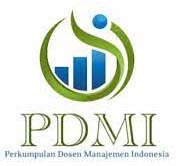STRUCTURAL VARIABLE ON THE JOB SATISFACTION OF 4 AND 5 STARRED HOTEL EMPLOYEES IN SURABAYA
DOI:
https://doi.org/10.9744/jmk.16.2.103-110Keywords:
Structural Variable, Job Satisfaction, Hotel EmployeeAbstract
The study aimed to find out the effect of management’s controllable factor, which was called internal factor or structural variable, on the job satisfaction of the 4 and 5 starred hotel employees’ in Surabaya. The study used quantitative explanative technique to explain the effect of structural variable on employees’ job sa-tisfaction. The result showed that structural variable had a positive and significant effect on job satisfaction. It is also found that employees’ job satisfaction was high when there was (or the highest indicator for structural variable was) fellow employees’ support and supervisor’s support, while the lowest indicator was job routine; the highest indicator for job satisfaction was satisfaction in salary, while the lowest indicator was supervisor’s competency in performing his or her tasks.References
Aamodt, M. G. 2004. Applied Industrial Organizatio-nal Psychology. USA: Thomson-Wadsworth.
Astrauskaitė, M., Vaitkevičius, R., & Perminas, A. 2011. Job Satisfaction Survey: A Confirmatory Factor Analysis Based on Secondary School Teachers’ Sample. International Journal of Business and Management, 6(5): 41–50.[CrossRef]
Cranny, C. J., Smith, P. C., & Stone, E. F. 1992. Job Satisfaction: How People Feel about Their Jobs and How It Affects Their Performance. New York, NY: Lexington Books.
Currivan, D. B. 2000. The Causal Order of Job Sat-isfaction and Organizational Commitment in Models of Employee Turnover. Human Resource Management Review, 9(4): 495–524.[CrossRef]
Datta, P. 2012. An Applied Organizational Rewards Distribution System. Management Decision, 50(3): 479–501.[CrossRef]
Hom, P. W. & Griffeth, R. W. 1995. Employee Turnover. Ohio: South-Western College.
Iverson, R. D. & Deery, M. 2007. Turnover Culture in the Hospitality Industry. Human Resource Management Journal, 7(4): 71–82.[CrossRef]
Johns, G. 1996. Organizational Behaviour: Under-standing and Managing Life at Work. Kansas City: Harper Collins College Publisher.
Kandampully, J. & Suhartanto, D. 2000. Customer Loyalty in the Hotel Industry: The Role of Customer Satisfaction and Image. International Journal of Contemporary Hospitality Manage-ment, 12(6): 346–351.[CrossRef]
Kartika, E. W. & Kaihatu, T. 2010. Analisis Pengaruh Motivasi Kerja terhadap Kepuasan Kerja (Studi Kasus pada Karyawan Restoran di Pakuwon Food Fest Surabaya). Jurnal Manajemen dan Kewirausahaan, 12(1): 100–112.
Kotler, P. & Armstrong, G. 1997. Marketing: An In-troduction. Upper Saddle River, NJ: Prentice-Hall.
Mahardika, G. 2006. Pengaruh Person-Organization Fit (Kecocokan Nilai-nilai Individu dengan Nilai-nilai Organisasi) terhadap Kepuasan Kerja, Komitmen Organisasi, dan Kinerja Karyawan (Studi pada RSI PKU Muhamma-diyah Pekalongan). Tesis tidak dipublikasikan. Semarang: Universitas Diponegoro.
Perkembangan Pariwisata dan Transportasi Nasional. Maret 2013. Berita Resmi Statistik, No. 29(5), Th. XVI.
Purnomo, H. 2012. Jumlah Ekspatriat Melonjak, Bisnis Properti Moncer, (http://finance.detik. com/read/2012/01/19/123208/1819784/1016/ jumlah-ekspatriat-melonjak-bisnis-prooperti-moncer, diakses 3 Oktober 2012).
Riketta, M. 2002. Attitudinal Organizational Commit-ment and Job Performance: A Meta Analysis. Journal of Organizational Behaviour, 23(3): 257–266.[CrossRef]
Schwepker Jr., C.H. 2001. Ethical Climate’s Relation-ship to Job Satisfaction, Organizational Commit-ment, and Turnover Intention in the Salesforce. Journal of Business Research, 54(1): 39–52.[CrossRef]
Sekaran, U. 2006. Metode Penelitian Bisnis. Jakarta: Salemba Empat.
Sha, N. 2007. A Study of the Relationships between Job Satisfaction and Procedural Justice Expe-rienced by Employees in a Brick Manufacturing
Company and Their Organiza-tional Citizenship Behaviour. Unpublished Disertation. Western Cape: University of Western Cape.
Spector, P.E. 1997. Job Satisfaction: Application, Assessment, Causes and Consequences. New York: Harper & Row.
Hotel Baru Menyerbu. 2012. Retrieved 3 October 2012 from http://www.surabayapost. co.id/?mnu =berita&act=view&id=a4b8ab86ad3bdd1ff0725be9e465a1cf&jenis=d41d8cd98f00b204e9800998ecf8427e.
Timmreck, T. C. 2001. Managing Motivation and Developing Job Satisfaction in the Health Care Work Environment. The Health Care Manager, 20(1): 42–58.[CrossRef]
Wahyuni, D. 2011. Hotel di Surabaya Kian Ketat Bersaing, (http://www.bisnis.com/articles/ hotel-di-surabaya-kian-ketat-bersaing, diakses 2 Okto-ber 2012).
Weiss, H. M. 2002. Deconstructing Job Satis-faction: Separating Evaluations, Beliefs and Affective Experiences. Human Resource Management Review, 12: 173–194.[CrossRef]
Downloads
Published
How to Cite
Issue
Section
License
Authors who publish on this journal agree to the following terms:
- Authors retain copyright and grant the journal right of first publication with the work simultaneously licensed under a Creative Commons Attribution License that allows others to share the work with an acknowledgement of the work's authorship and initial publication in this journal.
- Authors are able to enter into separate, additional contractual arrangements for the non-exclusive distribution of the journal's published version of the work (e.g., post it to an institutional repository or publish it in a book), with an acknowledgement of its initial publication in this journal.
- Authors are permitted and encouraged to post their work online (e.g., in institutional repositories or on their website) prior to and during the submission process, as it can lead to productive exchanges, as well as earlier and greater citation of published work (See The Effect of Open Access).

















